
The Adriatic Campaign of World War I was a naval campaign fought between the Central Powers and the Mediterranean squadrons of Great Britain, France, the Kingdom of Italy, Australia, and the United States.
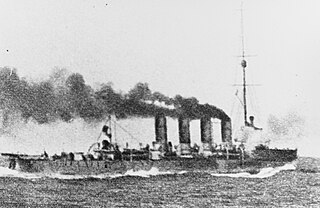
The Battle of the Strait of Otranto of 1917 was the result of an Austro-Hungarian raid during the Adriatic Campaign of World War I on the Otranto Barrage, an Allied naval blockade of the Strait of Otranto. The battle took place on 15 May 1917, and was the largest surface action in the Adriatic Sea during World War I. The Otranto Barrage was a fixed barrier, composed of lightly armed naval drifters with anti-submarine nets coupled with minefields and supported by Allied naval patrols.
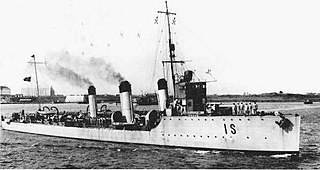
Insidioso was an Italian Indomito-class destroyer. Commissioned into service in the Italian Regia Marina in 1914, she served in World War I, playing an active role in the Adriatic campaign and seeing action in the Battle of the Strait of Otranto in 1917. Reclassified as a torpedo boat in 1929, she was stricken in 1938. Reinstated in 1941, she was captured by Nazi German forces in 1943 during World War II. She then served in the German Kriegsmarine as TA21 until she was sunk in 1944.
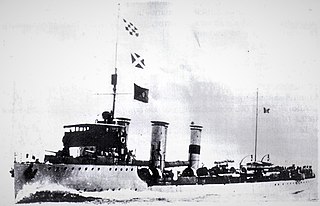
Giuseppe Missori was an Italian Rosolino Pilo-class destroyer. Commissioned into service in the Italian Regia Marina in 1916, she served in World War I, playing an active role in the Adriatic campaign. Reclassified as a torpedo boat in 1929, she participated in the Mediterranean campaign of World War II until the Italian armistice with the Allies, prompting Nazi Germany to capture her. Subsequently operating in the Kriegsmarine as TA22, she participated in the Adriatic campaign until she was seriously damaged in 1944. She sank in May 1945.
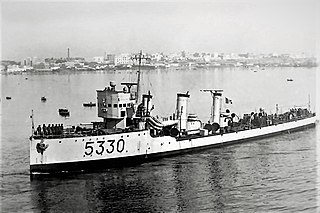
Giuseppe Cesare Abba was an Italian Rosolino Pilo-class destroyer. Commissioned into service in the Italian Regia Marina in 1915, she served in World War I, playing an active role in the Adriatic campaign. Reclassified as a torpedo boat in 1929, she participated in the Mediterranean and Adriatic campaigns of World War II. In 1943, she switched to the Allied side, operating as part of the Italian Co-belligerent Navy for the remainder of the war. She served in the postwar Italian Navy and was reclassified as a minesweeper in 1954. She was stricken in 1958.
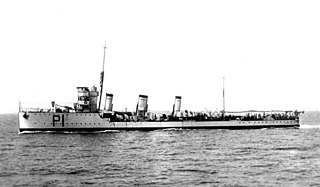
Rosolino Pilo was the lead ship of the Italian Rosolino Pilo-class destroyers. Commissioned into service in the Italian Regia Marina in 1915, she served in World War I, playing an active role in the Adriatic campaign and seeing action in the Battle of the Strait of Otranto in 1917. Reclassified as a torpedo boat in 1929, she served in the Mediterranean and Adriatic campaigns of World War II. Briefly captured by Nazi Germany in 1943, she served on the Allied side in the Italian Co-belligerent Navy for the remainder of the war. She served in the postwar Italian Navy and was reclassified as a minesweeper in 1952. She was stricken in 1954.
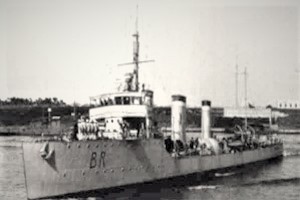
Pilade Bronzetti was an Italian Rosolino Pilo-class destroyer. Commissioned into service in the Italian Regia Marina in 1916, she served in World War I, participating in the Adriatic campaign. She supported Gabriele D'Annunzio′s actions in Fiume in 1920, and was renamed Giuseppe Dezza in 1921. Reclassified as a torpedo boat in 1929, she took part in the Mediterranean campaign of World War II until the Italian armistice with the Allies, prompting Nazi Germany to capture her. Subsequently operating in the Kriegsmarine as TA35, she participated in the Adriatic Campaign of World War II until she was sunk in 1944.
Antonio Mosto was an Italian Rosolino Pilo-class destroyers. Commissioned into service in the Italian Regia Marina in 1915, she served in World War I, playing an active role in the Adriatic campaign and seeing action in the Battle of the Strait of Otranto in 1917. Reclassified as a torpedo boat in 1929, she participated in the Mediterranean and Adriatic campaigns of World War II. In 1943, she switched to the Allied side, operating as part of the Italian Co-belligerent Navy for the remainder of the war. She served in the postwar Italian Navy and was reclassified as a minesweeper in 1953. She was stricken in 1958.
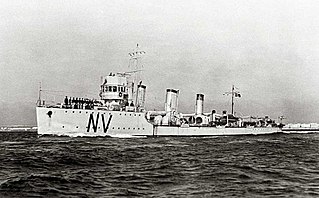
Ippolito Nievo was an Italian Rosolino Pilo-class destroyer. Commissioned into service in the Italian Regia Marina in 1915, she served in World War I, participating in the Adriatic campaign, during which she took part in motor torpedo boat raids and operated on convoy escort duty. Reclassified as a torpedo boat in 1929, she was stricken in 1938.
Simone Schiaffino was an Italian Rosolino Pilo-class destroyer. Commissioned into service in the Italian Regia Marina in 1915, she served in World War I, participating in the Adriatic campaign, including the Battle of the Strait of Otranto. Reclassified as a torpedo boat in 1929, she took part in the Mediterranean campaign of World War II until she was sunk in 1941.

Audace was the lead ship of the Audace-class destroyers of the Italian Regia Marina. Commissioned in 1914, she served during World War I, participating in the Adriatic campaign and operating as a convoy escort until she sank after a collision in 1916.
Animoso was the second and final Audace-class destroyer of the Italian Regia Marina. Commissioned in 1914, she played an active role in the Adriatic campaign of World War I. Badly damaged by an accidental explosion in 1921, she was stricken in 1923.
Ardito was the lead ship of the Italian Ardito-class destroyers. Commissioned into service in the Italian Regia Marina in 1913, she served in World War I, playing an active role in the Adriatic campaign. Reclassified as a torpedo boat in 1929, she was discarded in 1931.
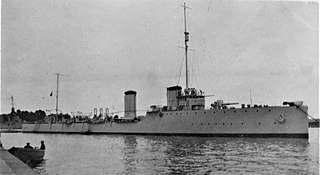
Ardente was the second and final unit of the Italian Ardito-class destroyers. Commissioned into service in the Italian Regia Marina in 1913, she served in World War I, playing an active role in the Adriatic campaign. Reclassified as a torpedo boat in 1929, she was discarded in 1937.
Impavido was an Italian Indomito-class destroyer. Commissioned into service in the Italian Regia Marina in 1913, she served in World War I, playing an active role in the Adriatic campaign and seeing action in the Battle of the Strait of Otranto. Reclassified as a torpedo boat in 1929, she was stricken in 1937.
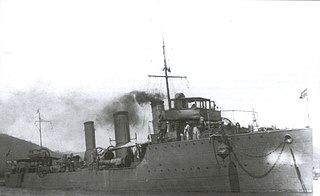
Impetuoso was an Italian Indomito-class destroyer. Commissioned into service in the Italian Regia Marina in 1914, she served in World War I, playing an active role in the Adriatic campaign until she was sunk in 1916.
Intrepido was an Italian Indomito-class destroyer. Commissioned into service in the Italian Regia Marina in 1913, she served in World War I, playing an active role in the Adriatic campaign until she was sunk in 1915.

Irrequieto was an Italian Indomito-class destroyer. Commissioned into service in the Italian Regia Marina in 1913, she served in World War I, playing an active role in the Adriatic campaign. Reclassified as a torpedo boat in 1929, she was stricken in 1937.
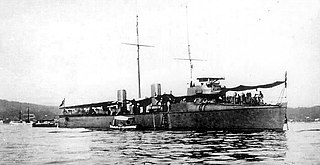
Borea ("Boreas") was an Italian Nembo-class destroyer. Commissioned into service in the Italian Regia Marina in 1903, she served in the Italo-Turkish War and World War I, playing an active role in the Adriatic campaign until she was sunk in 1917 during the Battle of the Strait of Otranto.













